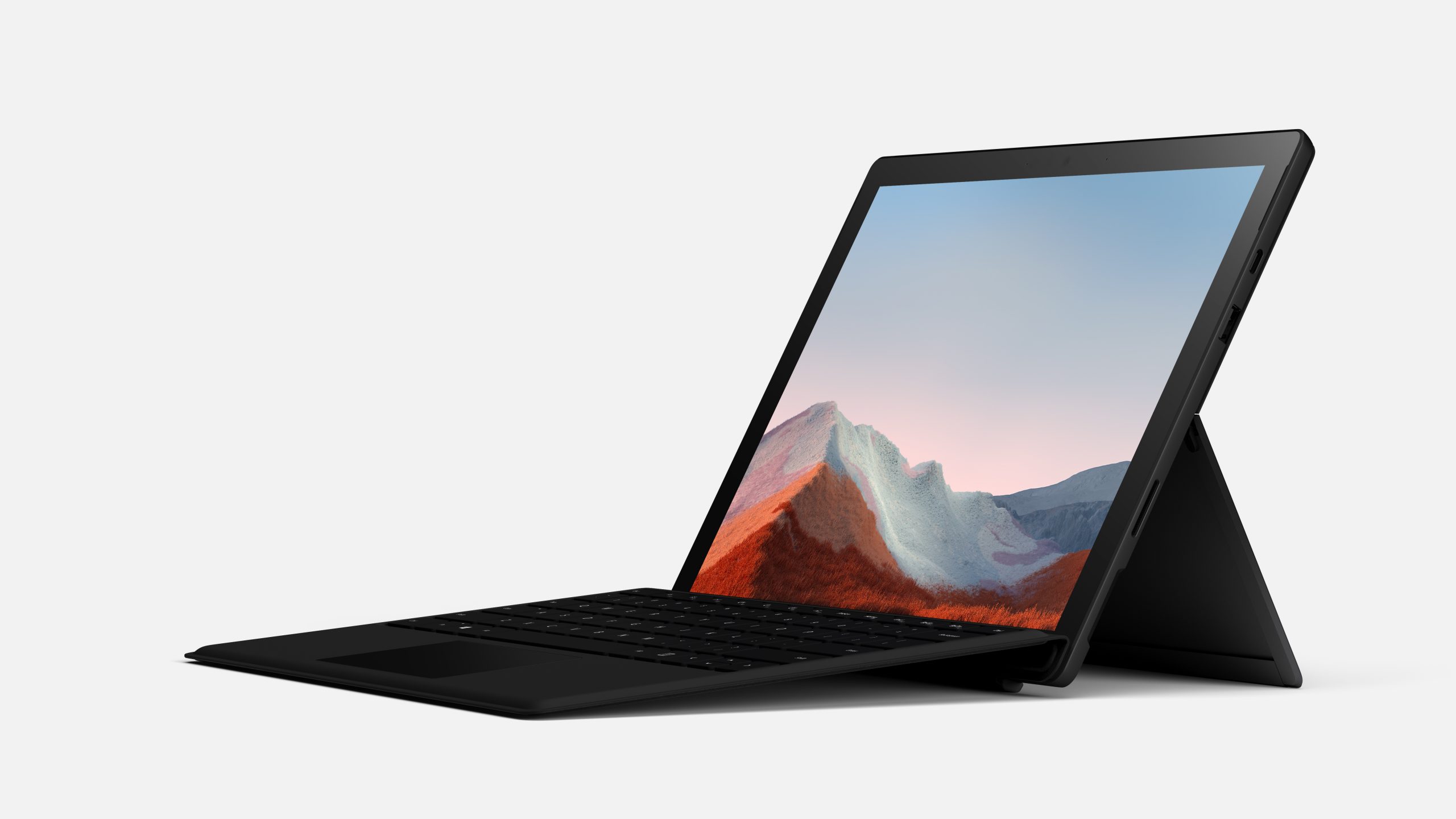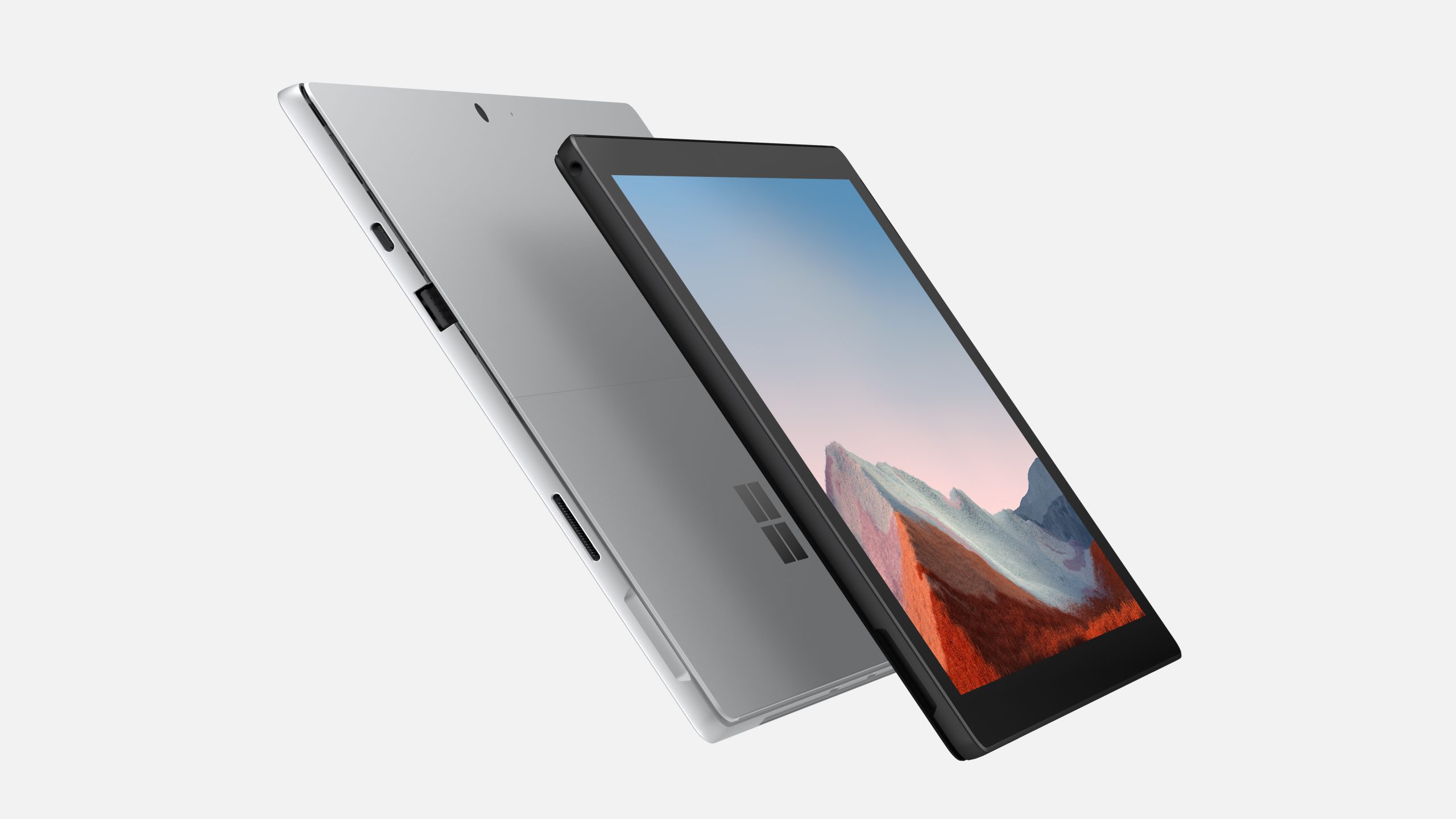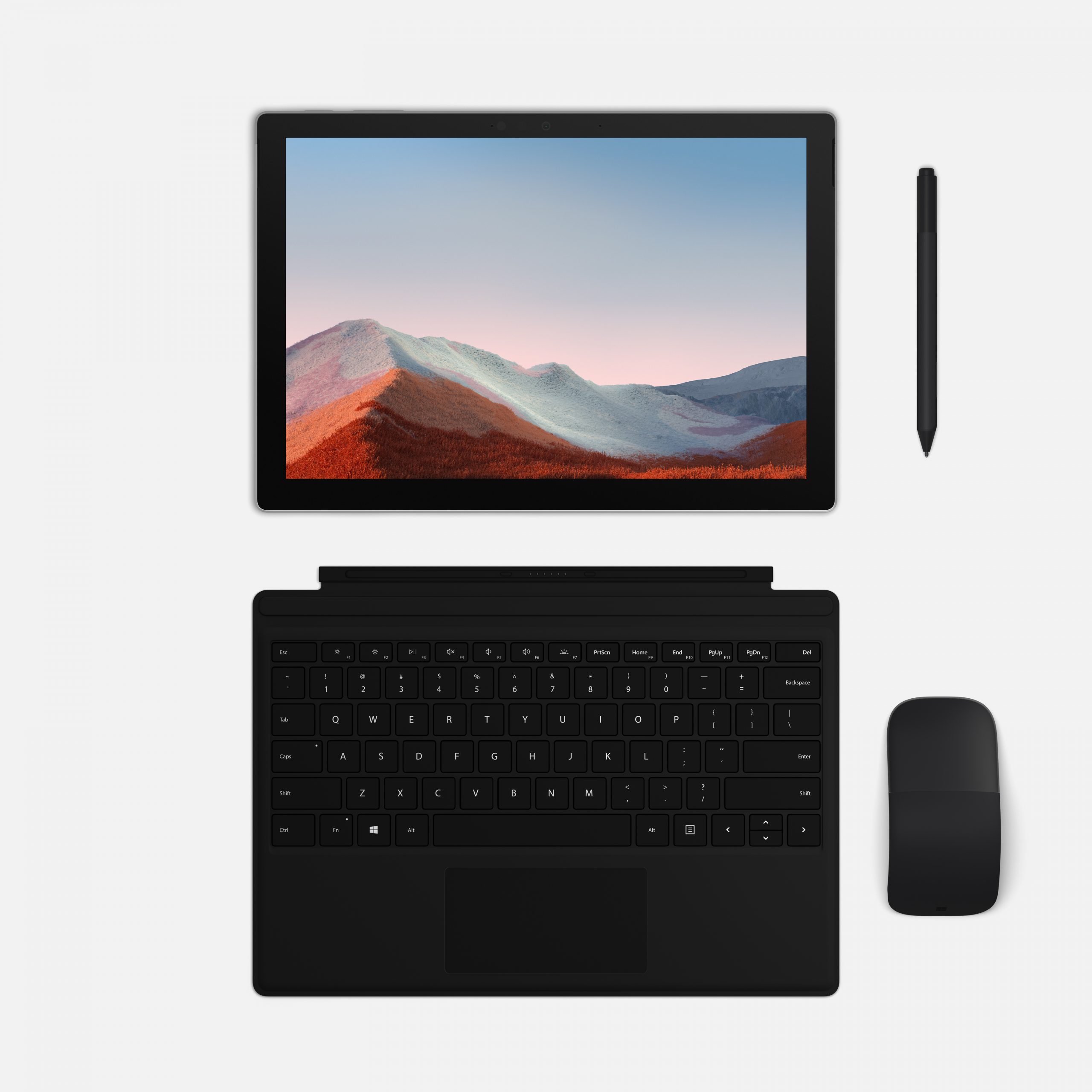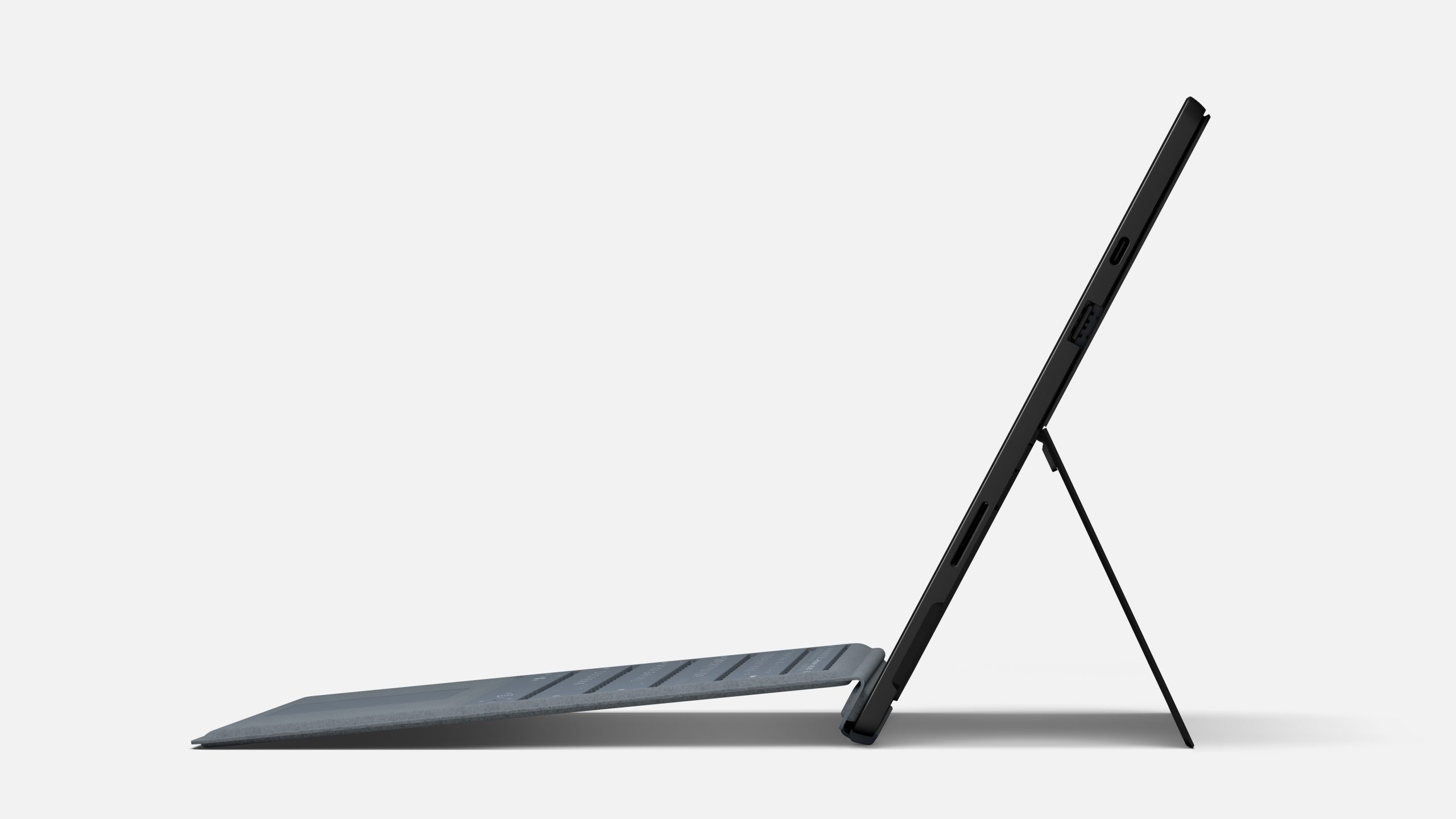* ThatSoftwareDude.com is a participant in the Amazon Services LLC Associates Program, an affiliate advertising program designed to provide a means for sites to earn advertising fees by advertising and linking to Amazon.com. It really does help keep the servers running!
Many people think that you need to have a super powerful heavy duty desktop PC with liquid cooling and dedicated graphics cards in order to churn out executable code. And while that may have been the case during the 90's and early 2000's, these days, with the latest chipsets and high performance storage drives, even tablets are starting to outrank most standard PC's and laptops on the market.
The Surface Pro 7 is one of those tablets. Due to its relatively high benchmarks, its portability and it's high resolution display, the Surface Pro 7 is indeed an ideal development machine for your typical everyday programmer. And if you are a freelancing or traveling programmer, then that's when the Surface Pro 7 really shows its capabilities.
I personally have been using the Surface Pro 6 (previous version) for the past few years (this exact model). From a technical standpoint, it is very close to the Surface Pro 7, which is why I'm writing about the latest model instead. The Pro 7 has the added benefit of finally getting a USC-C (3.1) port and the new chipsets flag it as being twice as fast as the Pro 6 model.
But let's see what else makes the Surface Pro 7 standout.
Highlights

Microsoft
I'll say now, I am a huge fan of the Surface line and have been for many years now. Mainly because of its portability factor. Though if portability is your main concern, then the Surface Go might be more to your liking. I started off years ago with the Surface 3 atom powered tablet and I have continued to upgrade to the latest versions as my workload increases.
The Surface Pro line runs like a full PC, yet it feels like a small notebook
when carrying it around. As a freelance web developer, traveling to
clients can become commonplace. And having a trusty laptop that feels
like a tablet that can run the full Office suite, along with Visual
Studio 2019, SQL Server, VS Code and alot more, without a problem is
incredibly convenient.
Here are a few more keypoints to take away:
- Low profile form factor
- Great keyboard with the type cover
- Finally a USB C port
- Powerful 10th gen Intel chipset
- Memory card slot for expanded storage
- WiFi 6
- Fast charging (charge up to 80% in 1 hour)
Just to name a few. But because this review is catered towards programmers, I will focus more on what programmer's need to do their work. And that is performance, keyboards and productivity.
Spec sheet
The Surface Pro 7 comes in a variety of configurations.
| OS |
Windows 10 Home |
| CPU |
Dual-core 10th Gen Intel® Core™ i3-1005G1 Processor
Quad-core 10th Gen Intel® Core™ i5-1035G4 Processor
Quad-core 10th Gen Intel® Core™ i7-1065G7 Processor
|
| Storage |
Solid-state drive (SSD) options: 128GB, 256GB, 512GB, or 1TB |
| Memory |
4GB, 8GB, or 16GB LPDDR4x RAM |
| Display |
Screen: 12.3” PixelSense™ Display
Resolution: 2736 x 1824 (267 PPI)
Aspect ratio: 3:2
Touch: 10 point multi-touch
|
| Battery |
Up to 10.5 hours of typical device usage |
| Wireless |
Wi-Fi 6: 802.11ax compatible
Bluetooth Wireless 5.0 technology
|
I personally run the i5, 128GB SSD, 8GB RAM configuration and have had no issues since it was purchased. I've run multiple IDE's at the same time and even mobile app emulators and everything runs as desired.
The only downside is with the limited storage capacity of 128GB. Since the OS already takes up a substantial amount of space by itself, the remaining < 100GB of space can fill up relatively quickly.
Just as an example, my current Visual Studio 2019 install, which includes modules for mobile app development like Xamarin, is well over 20GB in storage space. So if you can, I'd recommend the 256GB configuration. Though, because the Surface devices use a MicroSDXC host controller, the expandable memory slot can support up to 2TB cards.
I personally use a 128GB micro SD card to double my laptops memory. You can typically pick up an extra micro SD card for under $20, such as the one that I use which you can find on Amazon.
Performance

Microsoft
When talking performance, we really are talking about the CPU and the GPU these days. And the Surface Pro 7 line delivers adequately in this regard.
Configurations for the CPU come with 3 different options.
Dual-core 10th Gen Intel® Core™ i3-1005G1 Processor
Quad-core 10th Gen Intel® Core™ i5-1035G4 Processor
Quad-core 10th Gen Intel® Core™ i7-1065G7 Processor
While the i3 can more than likely handle your everyday office tasks, you'll need to start at the i5 level if you are really going to use it as a primary work machine.
Your typical programmer at any one time might have the following launched and running simulations.
- Visual Studio
- VS Code
- SQL Server
- Inkscape
- Photoshop
- 100+ browser tabs
- 100+ Explorer windows
And whatever else helps you to get your work done. And if you are anything like me, you are constantly switching tasks every 10 minutes or so. Needless to say, it's nice when an application loads in less than 1 second avoiding any type of distraction.
Also note that the Surface Pro 7 aims to be twice as fast as the previous Surface Pro 6 model and that's thanks in part to the latest 10th gen Intel chipset, as the Surface Pro 6 uses 8th gen chips.
Having said that though, this is still a small form-factor laptop/tablet hybrid. So you won't be maxing out the graphics settings on your favorite FPS game. But you can definitely run the latest gen games with moderate settings and the Surface Pro 7 won't have any issues.
I can base that on the fact that I do use the Surface Pro 6 for relatively moderate gaming sessions and so far it's kept up very well with my Steam library.
Portability

Microsoft
The biggest draw for many business people (freelancers) when it comes to the Surface Pro 7, is the portability of the whole thing. Weighing in at around 1.7lbs, and being as thin as a typical sized notebook, you can essentially take the Surface Pro 7 with you anywhere without any concern.
The Surface Pro 6 that I use essentially goes me with wherever it is that I go. It fits into any backpack only taking up an inch of space.
While many programmers enjoy having their coding setup at home with multiple monitors and gaming chairs, I tend to do my best coding work in coffee shops (when open) or at co-working spaces (also when open).
Even when I worked in corporate environments, there were multiple times in a week when I would need to go to someone else's desk or cubicle to discuss projects. Having your entire workstation in a single portable package really gives you that added sense of freedom.
And if you pair it with a Surface Pen, which magnetically attaches to the sides of the tablet, you really get that whole mobile creative studio vibe when you are working.
And with the added USB C 3.1 port on the latest model, you can also charge your device without having to carry around a clunky power supply. However, charging time will be reduced greatly through USB C charging.
Type Cover keyboard

Microsoft
Keyboards are important for programmers. The tactile sensation, the spacing of the keys and even the sound that they produce as you type away for loop's and conditional statements.
I've said it before in other articles, and I'll say it once again here. Microsoft's Type Cover keyboard is one of the best keyboards that I have personally used. And I've used many a keyboard in the past. What makes it so special, you may ask? Aside from the added $60 cost for the premium Alcantara fabric version, there's alot to like about the keyboard.
For one, the chiclet style keys are perfectly spaced out ensuring that you don't feel cramped while typing, but also that the keys are within range so that you aren't reaching across the board too frequently.
It's also backlit with up to 3 levels of intensity. I typically find the first level to be more than enough for clear visibility, even in the darkest rooms. And you can also turn it off completely with a single touch of a button.
And lastly, it's quiet. This one is huge for me, as like I mentioned, I enjoy working out of coffee shops. And my overall typing speed these days sit at around 100-110 WPM. That essentially means, a constant stream of clicks coming from my location. With the Surface Pro Type Cover, nobody but you will hear how fast your are working.
Battery life
The battery life on previous Surface devices has never been a standout feature. And with some of the newest laptops on the market promising 20+ hours of non-stop battery life, the Surface Pro starts to show its age just a bit. While battery life depends vastly from person to person, the stated battery life for average use sits at around 10.5 hours.
Which is interesting, because the stated battery life for the previous Surface Pro 6 model, was actually around 13.5 hours, meaning that the latest gen chipsets don't come without a cost.
You might be getting twice as fast CPU performance, but with a 3 hour decrease in workload time. However, 10 hours should still be more than enough to get work done without a wall outlet in sight. It's only been a rare situation when I've run low on juice and that was mainly due to heavy compilation on large projects.
The downsides
There isn't too much to hate on this particular device, and if you are a fan of the Surface line in general, then there really isn't anything to hate.
But I wouldn't be giving a fair assessment if I didn't nitpick just a bit on the downsides. And I think the biggest downside so far really is the battery life.
For a device that is marketed as a mobile professional's dream computing device, that only holds true for the 7-10 hours that you might get out of it before you are running to the nearest wall socket.
Unlike the ARM based Surface Pro X, the Surface Pro 7 is still aiming to give you a full Windows 10 experience, and that comes at a price.
Microsoft's newest custom chipsets, the SQ1 and SQ2, might be the solution to this problem in the near future however. And while the Surface Pro 7 might not bring with it a 20+ hour battery life, we are not that far off.
Is it good for developers?
With a powerful Intel Core 10th gen chipset, a hefty SSD drive and up to 16GB of RAM (at the highest end), the Surface Pro 7 is definitely powerful enough to run even the most resource intensive IDE's, compilers, interpreters and emulators.
Pair it with a slick type cover, like this one, and a Surface Pen, and you have yourself a mobile workstation that weighs in at less than 2lbs.
But the real standout features relate more to the form factor and to its overall portability. Whether you are a college student studying in a random corner of a computer lab, a freelancer traveling the states to meet clients, or a programmer that's rarely at their desk, the Surface Pro 7 makes for a great tech companion.